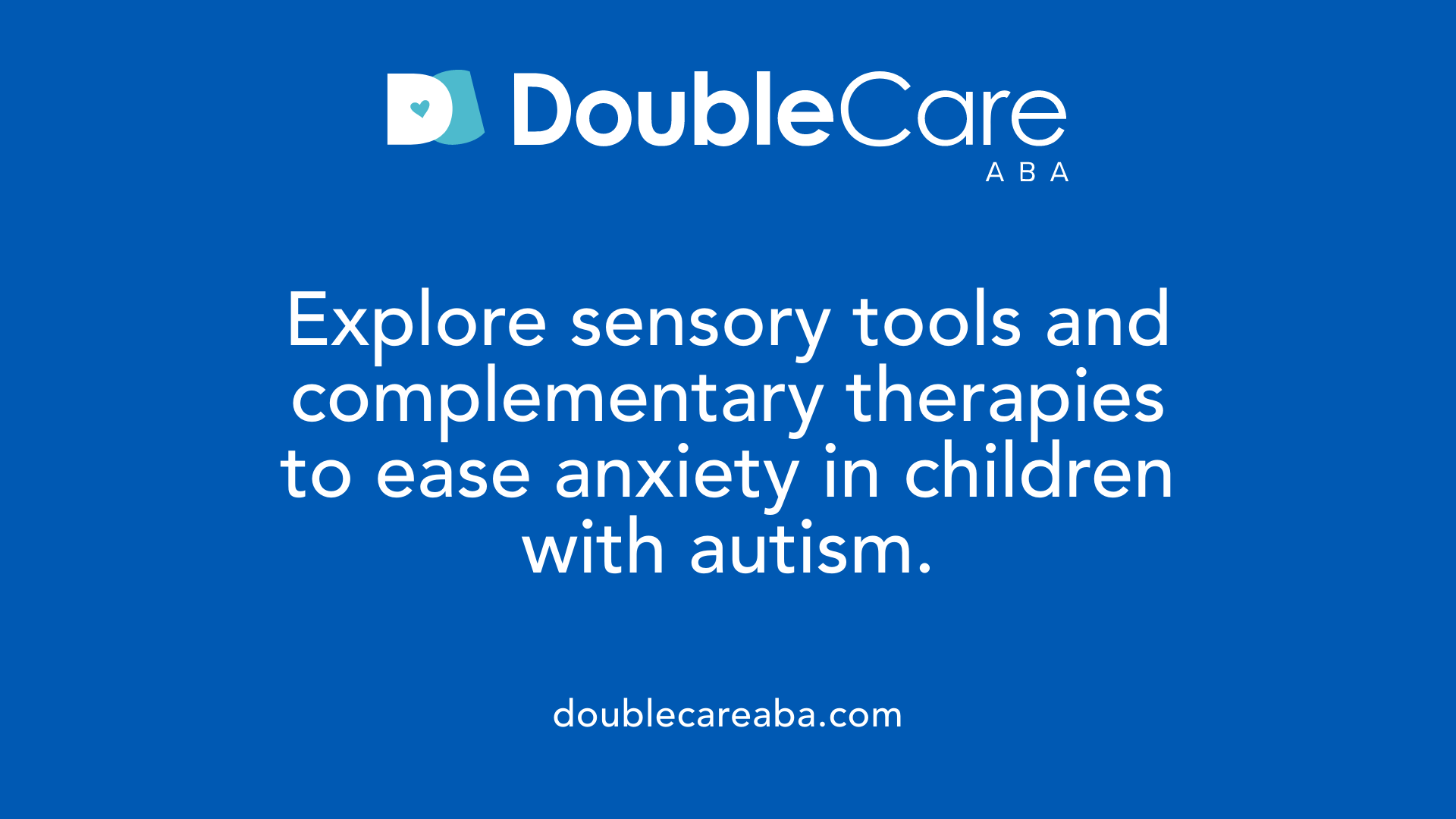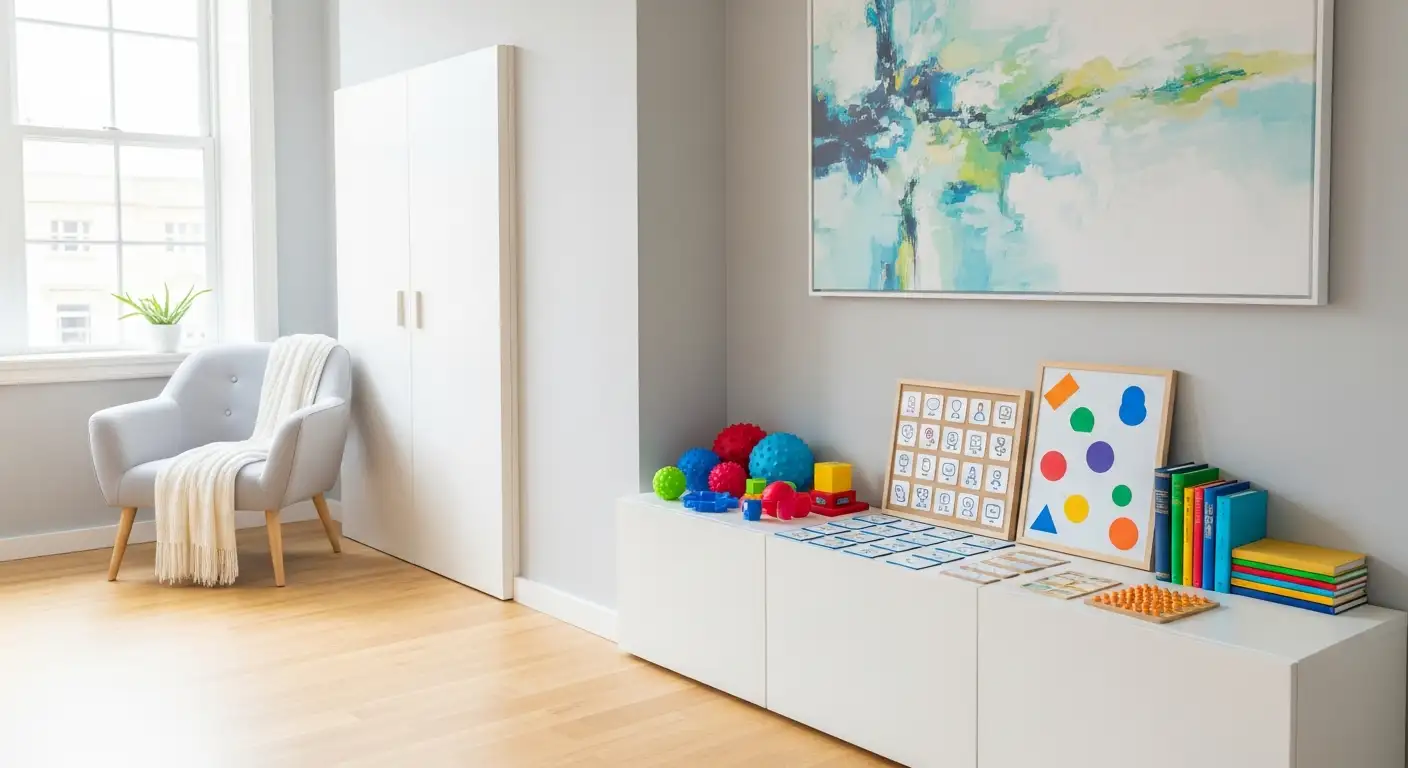Understanding Anxiety and Change in Autism
For many individuals with autism, change can trigger significant anxiety, manifesting in avoidance behaviors, repetitive actions, or physical symptoms like sleep difficulties. Addressing this anxiety requires tailored interventions that consider sensory, cognitive, and emotional factors. This article explores evidence-based therapies and practical strategies to help individuals with autism manage anxiety effectively during times of change, improving adaptability and overall well-being.
Applied Behavior Analysis (ABA) Therapy: Foundations and Application
What is Applied Behavior Analysis (ABA) therapy and how is it used to treat autism?
Applied Behavior Analysis (ABA) therapy is a scientifically-based approach that focuses on understanding and modifying behavior to support individuals with autism. It helps children build essential skills such as communication, social interaction, and daily living activities by breaking down complex tasks into smaller, manageable steps. ABA uses positive reinforcement to encourage desired behaviors and reduce problematic ones.
Definition and principles of ABA
ABA is grounded in learning theory and behaviorism. It involves observing behavior, identifying causes, and applying interventions tailored to each child's unique needs. Key principles include reinforcement, prompting, and careful tracking of progress using data analysis. The goal is to teach adaptive behaviors that improve quality of life.
How ABA is used to treat autism
ABA therapy is individualized, addressing specific challenges such as anxiety management and communication difficulties. It teaches coping mechanisms, often employing visual supports and social stories to increase predictability and reduce uncertainty. Therapists work closely with families and educators to provide consistent support across settings.
Techniques employed in ABA therapy
Two common teaching styles are Discrete Trial Training (DTT) and Pivotal Response Training (PRT). DTT involves step-by-step instructions with rewards for correct responses, while PRT takes place in natural environments and targets pivotal skills like initiating communication. Functional Communication Training (FCT) helps children express needs, reducing frustration and meltdowns.
Settings and delivery of ABA therapy
ABA can be delivered at home, school, or in community settings, allowing skills learned to generalize across different environments. Collaboration among therapists, educators, and families ensures comprehensive care.
Typical session structure
Sessions often follow structured routines with clear instructions, followed by reinforcement. Visual schedules and gradual exposure techniques are used to ease transitions and prevent anxiety. Parent involvement is critical for reinforcing strategies beyond therapy sessions.
| Aspect | Description | Example/Application |
|---|---|---|
| Principles | Reinforcement, prompting, data tracking | Encouraging hand-raising before speaking |
| Techniques | DTT, PRT, FCT | Stepwise teaching, natural setting play |
| Settings | Home, school, community | Therapy sessions at daycare and home visits |
| Collaboration | Therapist-family-educator teamwork | Consistent communication strategies across |
| Session Structure | Visual schedules, positive reinforcement, role-play | Using social stories for new situations |
Who Provides ABA Therapy and What Qualifications Are Required?

Who typically provides ABA therapy for individuals with autism?
ABA therapy is delivered primarily by licensed professionals with specialized training in behavioral analysis. The most recognized providers include Board Certified Behavior Analysts (BCBAs), who design and oversee individualized treatment plans. BCBAs usually hold a master's degree or higher in ABA or a related field and have completed extensive supervised experience, often thousands of hours, to qualify for certification.
What certifications and training are required?
Certification is essential in ensuring quality and expertise. Key certifications include:
- Board Certified Behavior Analyst (BCBA): Requires graduate-level education, passing a certification exam, and supervised fieldwork.
- Registered Behavior Technician (RBT): A paraprofessional credential requiring specific training and competency assessment, assisting BCBAs in implementing therapy.
- Board Certified Assistant Behavior Analyst (BCaBA): Intermediate certification requiring a bachelor's degree, supervised experience, and exam passage.
What roles do BCBAs, RBTs, and other staff play?
- BCBAs: Develop treatment plans, conduct assessments, analyze data, and supervise the therapy team.
- RBTs: Implement intervention strategies directly with children under BCBA supervision.
- BCaBAs and other staff: Support both BCBAs and RBTs by assisting with program delivery and monitoring.
Why is supervised experience important?
Supervised experience provides practical, hands-on training under expert guidance, ensuring clinicians apply evidence-based practices effectively and ethically. It establishes competence in individualized program design and responsive implementation.
This structured training and certification system guarantees that individuals delivering ABA therapy possess the knowledge, skills, and professionalism necessary to support children with autism successfully.
Benefits and Limitations of ABA Therapy in Managing Anxiety and Autism
What are the advantages of ABA therapy for individuals with autism?
ABA therapy provides a range of benefits that make it a widely recognized treatment for autism. It is evidence-based and uses positive reinforcement to encourage desirable behaviors and reduce challenging ones. By tailoring techniques to each child's specific needs, ABA helps improve communication, social skills, and daily living tasks. Programs focus on breaking complex behaviors into smaller steps, which supports learning and coping with anxiety.
This therapy emphasizes early intervention, which can lead to substantial developmental improvements. Involving families, educators, and therapists creates a strong support network that helps children generalize skills across different environments such as home and school. ABA also incorporates visual supports, social stories, and role-playing to build adaptability and prepare children for transitions or new situations.
How does ABA therapy improve skills and behavior?
ABA techniques like discrete trial training (DTT) and pivotal response training (PRT) help children develop targeted skills in structured and natural settings. For example, functional communication training (FCT) allows children to express needs and frustrations, reducing anxiety and meltdowns. Sensory strategies—such as deep touch pressure and fidget toys—are included to manage sensory overload, which often contributes to anxiety.
Beyond behavior modification, ABA encourages skill generalization across settings, supporting children to use coping strategies in various social and community scenarios. Continued reinforcement and parental involvement bolster these advances, leading to better emotional regulation and flexibility.
What are the early intervention benefits?
Starting ABA therapy early capitalizes on children's developmental plasticity, promoting quicker gains in communication, social interaction, and independence. Early treatment helps identify and address anxiety triggers promptly, incorporating calming spaces and predictable routines. This proactive approach reduces long-term anxiety and supports smoother transitions and adaptability throughout life.
What are the potential criticisms and emotional impacts of ABA therapy?
Despite its strengths, ABA therapy has faced critiques. Its intensive and structured nature can sometimes cause emotional distress or burnout, especially if it feels rigid or overly controlling. Some individuals report feelings of frustration when therapy focuses too much on compliance, potentially encouraging masking of natural autistic behaviors such as stimming.
Concerns also exist about whether ABA always respects individual autonomy and preferences, with critics emphasizing the need for truly personalized approaches that honor each person’s identity and well-being.
What concerns exist regarding masking and autonomy?
Masking autistic traits to fit social norms is a debated aspect of ABA therapy. While ABA aims to teach adaptive skills, it may inadvertently pressure children to hide natural behaviors, impacting their emotional health and self-expression. Advocates suggest integrating more holistic and autonomy-focused methods alongside ABA to ensure that therapy supports emotional well-being without suppressing individuality.
| Aspect | Benefits | Limitations |
|---|---|---|
| Therapy Approach | Evidence-based, individualized treatment | Can be rigid and intensive |
| Skill Development | Improves communication, social skills, daily living | May encourage masking of autistic traits |
| Emotional Impact | Builds coping and anxiety management tools | Risk of emotional distress or burnout |
| Family Involvement | Collaboration with family enhances success | Some approaches may overlook personal preferences |
| Flexibility and Autonomy | Encourages adaptability through tailored techniques | Concerns about compliance over autonomy |
ABA Strategies for Reducing Anxiety During Change
Breaking down tasks
ABA therapy helps children by breaking down complex tasks and changes into smaller, manageable steps. This method reduces overwhelm and assists children in gradually adjusting to new situations.
Visual supports and schedules
Visual supports like schedules provide predictability, which is crucial for reducing anxiety. By knowing what to expect, children feel more secure during transitions.
Social stories for preparation
Personalized social stories explain upcoming changes or new environments. This preparation helps children understand and mentally rehearse what will happen, reducing uncertainty and stress.
Gradual exposure techniques
Introducing small, manageable changes incrementally prevents children from becoming overwhelmed. This exposure builds tolerance to change over time.
Role-playing and positive reinforcement
Role-playing new scenarios allows children to practice coping skills in a safe setting. Positive reinforcement motivates flexible behavior and helps reinforce successful transitions.
Functional Communication Training
Functional Communication Training (FCT) teaches children to express needs or frustrations related to change effectively. Improved communication reduces meltdowns and anxiety linked to misunderstandings.
Calming tools and self-regulation strategies
Calming strategies such as deep breathing, use of fidget toys, and creating safe spaces support children in managing emotions during changes.
Parental involvement and consistency
Parents play a vital role by consistently applying ABA strategies at home. Collaboration between therapists and families ensures continuity and maximizes therapy benefits during transitions.
Integrating Cognitive Behavioral Therapy (CBT) to Support Anxiety Management

How effective is CBT for managing anxiety in autism?
Cognitive Behavioral Therapy (CBT) has proven effective in reducing anxiety among individuals with autism. It is particularly beneficial for high-functioning individuals with strong verbal skills, although exposure-focused CBT (EF-CBT) adaptations extend benefits to those with lower communication abilities and cognitive delays.
What role does psychoeducation play in anxiety recognition?
Psychoeducation helps individuals with autism identify their physiological and cognitive responses to anxiety. This awareness empowers them to apply coping strategies appropriately, facilitating better self-regulation.
How do fear hierarchies and graded exposure aid anxiety treatment?
Creating a fear hierarchy involves listing anxiety triggers from least to most distressing to enable gradual exposure. Graded exposure, often reinforced through special interests, helps reduce avoidance behaviors and build tolerance to anxiety-provoking situations.
What cognitive restructuring techniques are used?
Cognitive restructuring challenges maladaptive thoughts such as catastrophizing by encouraging realistic perspectives. This shift in thinking helps individuals manage anxiety more effectively.
Which relaxation strategies assist anxiety management?
Relaxation techniques include diaphragmatic or "belly" breathing and sensory engagement like calming music, fidget toys, and soothing scents. These approaches target the physiological symptoms of anxiety and promote calmness.
What benefits does exposure-focused CBT (EF-CBT) offer?
EF-CBT emphasizes psychoeducation, fear hierarchy creation, and graduated exposure activities. Research shows that dedicating at least 50% of treatment time to exposure leads to larger effect sizes and improved outcomes.
How important is parent involvement and treatment duration?
Parent involvement enhances treatment effectiveness by supporting application of strategies in daily life. Extended therapy duration leads to more sustained anxiety reduction, highlighting the value of ongoing support.
| Aspect | Description | Benefit |
|---|---|---|
| CBT Effectiveness | Reduces anxiety, especially in high-functioning autism | Tailored adaptations benefit diverse abilities |
| Psychoeducation | Builds anxiety recognition skills | Enables timely use of coping strategies |
| Fear Hierarchy & Exposure | Gradual exposure to anxiety triggers | Diminishes avoidance and increases coping |
| Cognitive Restructuring | Challenges negative thoughts | Promotes realistic thinking to reduce anxiety |
| Relaxation Strategies | Breathing, sensory engagement | Manages physiological anxiety symptoms |
| EF-CBT | Emphasizes exposure activities | Increases treatment effectiveness |
| Parent Involvement & Duration | Supports consistency and long-term gains | Strengthens and sustains therapy outcomes |
Complementary Therapies and Sensory Strategies to Support Anxiety Reduction

Use of Sensory Tools Like Deep Touch Pressure and Fidget Toys
Sensory strategies play an important role in reducing anxiety and managing sensory overload for children with autism. Deep touch pressure techniques, such as weighted blankets or vests, provide calming input by offering firm, gentle pressure. Additionally, tools like fidget toys help children regulate their sensory experiences and maintain focus, ultimately easing feelings of distress.
Assistive Communication Technology
Communication challenges often contribute to anxiety in children with autism. Assistive communication technologies, including speech-generating devices and visual communication apps, allow children to express their needs and emotions more effectively. This reduction in communication-related frustration helps lower anxiety levels by giving children a reliable way to interact.
Occupational and Speech Therapies
Occupational therapy supports independence by developing skills in daily tasks like dressing, eating, and social interaction. Sensory integration therapy within occupational therapy targets sensory responses tied to anxiety. Speech and language therapy enhances understanding and use of speech, gestures, and visual aids, improving communication and reducing anxiety that stems from misunderstandings.
Mindfulness, Relaxation, and Arts Therapies
Complementary approaches such as mindfulness exercises, relaxation techniques, and arts therapies (including music and animal-assisted therapy) offer additional calming methods. These therapies promote emotional regulation by encouraging self-awareness and providing outlets for expression, often used alongside traditional therapies under medical guidance.
Educational Approaches Like TEACCH
Educational treatments like the TEACCH program emphasize structure, visual learning, and consistency. The use of visual routines and physical demonstrations helps children understand what to expect, reducing unpredictability and associated anxiety in classroom and learning settings.
Social-Relational Approaches Such as DIR and RDI
Social-relational methods like DIR/Floor Time follow the child's interests to foster expanded communication and emotional connections. Relationship Development Intervention (RDI) encourages shared social interactions, supporting children in building stronger relationships and alleviating social anxieties.
This combination of complementary therapies and sensory strategies addresses diverse needs and fosters a comprehensive environment to help children with autism manage anxiety effectively.
Managing Transitions and Change: Practical Tips for Families and Educators

How Can Establishing Predictability Reduce Anxiety?
Establishing predictability through visual supports like schedules and written plans can significantly reduce anxiety for children with autism. Visual routines offer a clear outline of what to expect, which diminishes uncertainty and helps children feel more secure during transitions or new activities.
Why Is Providing Advanced Notice of Changes Important?
Giving advanced notice before any changes occur allows children to prepare mentally and emotionally. Communicating upcoming adjustments in a timely manner reduces surprise and helps prevent overwhelm, making transitions smoother and less stressful.
How Can Families and Educators Practice Flexibility Gradually?
Practicing flexibility in small, controlled doses enables children to adapt to change without becoming overly anxious. Gradual exposure to new situations or modifications can build resilience and coping skills, allowing children to manage transitions more effectively over time.
What Strategies Support Communication Around Change?
Supporting communication during transitions is essential. Techniques such as Functional Communication Training (FCT) empower children to express their needs, frustrations, or questions about change. Additionally, social stories and role-playing can prepare children by familiarizing them with upcoming experiences in an understandable format.
How Can Safe, Calming Spaces Be Created to Help Children Manage Anxiety?
Creating safe, calming environments provides children with a retreat where they can regulate emotions during challenging transitions. Incorporating sensory strategies—like deep pressure, fidget toys, and calming music—assists in managing sensory overload and anxiety symptoms.
Why Is Collaboration Among Therapists, Educators, and Families Crucial?
A comprehensive support network involving therapists, educators, and families promotes consistency and reinforcement of coping strategies across settings. When all parties work together, children benefit from unified approaches tailored to their specific triggers and needs, enhancing their adaptability and reducing anxiety during transitions.
Medication and Alternative Treatments: Balancing Benefits and Considerations

What Is the Role of Medications in Managing Anxiety and Behaviors in Autism?
Medications do not target the core symptoms of autism but can be effective in managing co-occurring issues such as anxiety, high energy levels, or challenging behaviors. Their role focuses on alleviating these secondary symptoms to improve overall functioning and quality of life for individuals with autism.
Why Is Collaboration with Healthcare Providers Crucial for Medication Management?
Because medication effects and needs vary widely among individuals, working closely with experienced healthcare professionals is essential. This collaboration ensures that any prescribed medication is appropriate, dosed correctly, and monitored for effectiveness and side effects, supporting the child's unique health profile.
What Are Complementary and Alternative Treatments Available?
Many families explore complementary approaches alongside traditional therapies, including:
- Dietary modifications
- Herbal supplements
- Animal-assisted therapy
- Arts therapy
- Mindfulness and relaxation techniques
These treatments aim to support wellbeing and sometimes address anxiety or sensory concerns.
Why Is Medical Consultation Important When Considering Alternative Treatments?
Professional medical guidance is strongly recommended before starting any alternative therapy. This helps to avoid potential interactions with current treatments and ensures that chosen approaches are safe and potentially effective for the individual’s specific needs.
How Are Interventions Tailored to the Individual?
A customized, multifaceted strategy is vital, considering sensory sensitivities, cognitive abilities, and emotional needs. Both medication and alternative treatments should be thoughtfully integrated based on ongoing assessments and collaborative decision-making with the family and care team.
Empowering Individuals with Autism Through Tailored Support
Managing anxiety related to change in individuals with autism requires a comprehensive, multifaceted approach that blends evidence-based therapies like ABA and CBT with complementary strategies and strong support networks. Early intervention, personalized treatment plans, and collaboration among professionals, families, and educators foster greater adaptability and well-being. While challenges and limitations exist, ongoing developments in therapy approaches continue to enhance outcomes, enabling individuals with autism to navigate change more confidently and thrive.
References
- Autism and Anxiety: Treatment Options and ABA Techniques
- Treatment and Intervention for Autism Spectrum Disorder
- ABA Therapy Techniques to Help Your Child Handle Change
- Managing Anxiety: Tools and Strategies for Emotional ...
- Optimising Anxiety Treatment for Autistic Children
- How to Become an ABA Therapist - School of Education
- Understanding ABA Therapist Qualifications
- ABA Certification Explained: RBT, BCaBA, BCBA, BCBA-D
- Applied Behavior Analysis (ABA)














